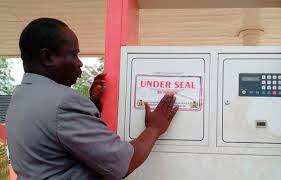Hey there, fellow fuel enthusiast! If you’re thinking about opening a filling station or already own one, it’s crucial to understand the Department of Petroleum Resources (DPR) requirements.
These regulations ensure the safety, quality, and efficiency of fuel operations in Nigeria.
In this comprehensive guide, we’ll dive deep into what you need to know, step by step.
What’s DPR, Anyway?
Before we delve into the requirements, let’s clarify what DPR stands for. The Department of Petroleum Resources is the Nigerian government agency responsible for regulating the oil and gas industry.
They oversee everything from exploration to distribution, ensuring compliance with safety and environmental standards.
related: The Ultimate Guide: Top 9 Gas Stations That Sell Worms Near Me
The Basics: Setting Up Your Filling Station
Location Matters
1. Land Size: DPR regulations stipulate minimum land size requirements based on your station’s classification. It’s essential to have the right amount of space for safe operations.
2. Zoning Approval: Check if your chosen location is approved for a filling station by local authorities. Without this, you can’t proceed.
Licensing and Permits
3. DPR License: You’ll need a license from the DPR to operate legally. The application process involves thorough scrutiny of your documents and site.
4. Fire Service Permit: Safety is paramount. Obtain a Fire Service Permit to ensure you have adequate fire-fighting equipment and procedures in place.
Infrastructure and Safety
Storage Tanks
5. Tank Design: Your fuel storage tanks must meet DPR specifications. Proper design ensures safety and minimizes environmental risks.
6. Leakage Prevention: Installing secondary containment systems is crucial to prevent soil and water contamination in case of leaks.
Dispensing Pumps
7. Pump Calibration: Regular calibration ensures accurate dispensing, preventing customers from being shortchanged.
8. Safety Features: Your dispensing pumps should have safety mechanisms, like emergency stop buttons, to handle unforeseen situations.
Fire Safety
9. Firefighting Equipment: Adequate firefighting equipment, like extinguishers and sand buckets, should be on-site and readily accessible.
10. Training: Ensure your staff is trained in fire safety and response protocols.
Environmental Considerations
Pollution Control
11. Environmental Impact Assessment: If required, conduct an Environmental Impact Assessment to identify and mitigate potential environmental issues.
12. Effluent Treatment: Implement proper effluent treatment systems to prevent soil and water pollution.
Operations and Documentation
Quality Control
13. Product Testing: Regularly test the quality of the fuel you sell to maintain customer trust and adhere to DPR standards.
14. Sales Records: Keep meticulous records of your sales and transactions as required by DPR.
Conclusion
Running a filling station in Nigeria is a rewarding venture, but it comes with its fair share of responsibilities.
To ensure the safety of your customers, staff, and the environment, compliance with DPR requirements is non-negotiable.
This guide should give you a solid foundation to start or manage your filling station successfully.
Always stay updated with the latest regulations, as DPR might revise them from time to time. Remember, safety and quality should be at the heart of your operations.
So, go ahead, fuel your dreams, and drive your business towards success while keeping the environment and safety in mind!

